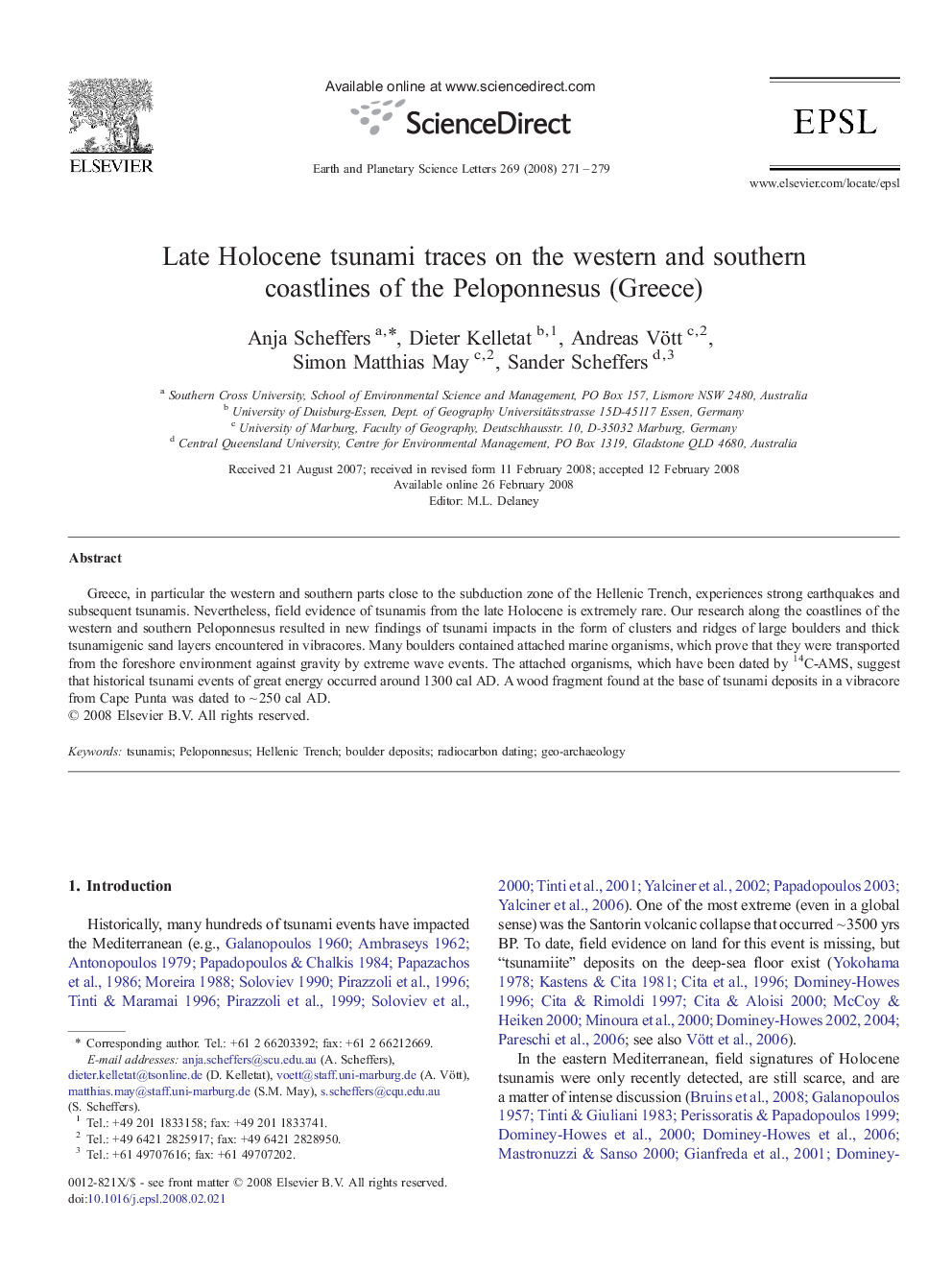| Article ID | Journal | Published Year | Pages | File Type |
|---|---|---|---|---|
| 4679939 | Earth and Planetary Science Letters | 2008 | 9 Pages |
Greece, in particular the western and southern parts close to the subduction zone of the Hellenic Trench, experiences strong earthquakes and subsequent tsunamis. Nevertheless, field evidence of tsunamis from the late Holocene is extremely rare. Our research along the coastlines of the western and southern Peloponnesus resulted in new findings of tsunami impacts in the form of clusters and ridges of large boulders and thick tsunamigenic sand layers encountered in vibracores. Many boulders contained attached marine organisms, which prove that they were transported from the foreshore environment against gravity by extreme wave events. The attached organisms, which have been dated by 14C-AMS, suggest that historical tsunami events of great energy occurred around 1300 cal AD. A wood fragment found at the base of tsunami deposits in a vibracore from Cape Punta was dated to ~ 250 cal AD.
